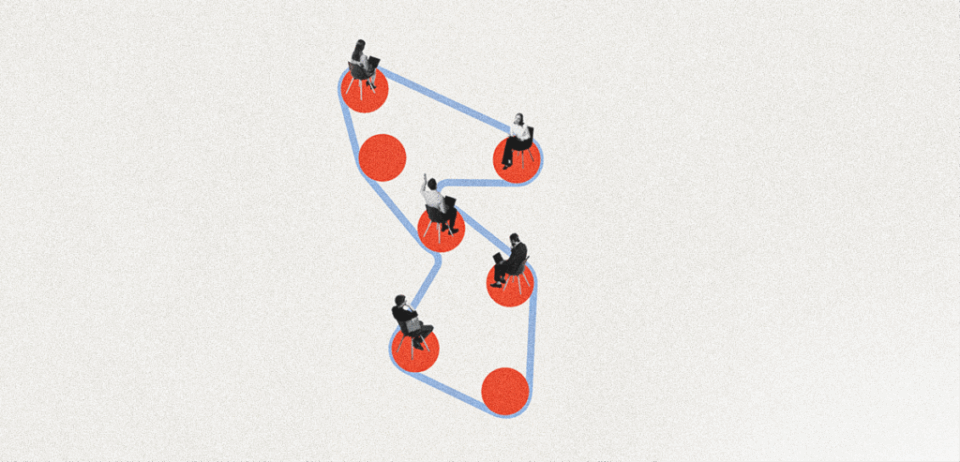
How Smart B2B Brands Use These 5 Modern Strategies to Unlock the Multiplier Effect
B2B marketing strategies can benefit from the multiplier effect.
In B2B marketing, there’s no single lever that pulls revenue skyward. Growth today is a choreography—a sync between strategy, tech, and timing. McKinsey’s Global B2B Pulse Survey confirmed this a few years back. However, the report is old, but the mantra stays top of mind.
What did the report state? The top B2B performers, or “B2B Winners,” are growing their market share by over 10% yearly—not by luck, but by mastering the multiplier effect and activating five critical sales and marketing tactics.
So, what are these critical S&M tips? Let’s break those five down and see why they work like rocket fuel when combined.
Power of the multiplier effect on B2B marketing strategies
In our previous story on the Multiplier effect, we saw that for too long, marketing teams have operated under a false dichotomy, avoiding the multiplier effect in marketing. The false dichotomy creates a distinction between brand building and demand generation.
Effects are the same on B2B businesses. It’s the compounding outcome of executing multiple strategies in sync—each one amplifying the others.
Companies that activate all five critical sales and marketing (S&M) tactics aren’t just doing better—they’re 2.1x more likely to snag that 10% growth leap.
Growth doesn’t come from one killer campaign or a flashy new CRM—it comes from a synchronized system. Simply put, these companies don’t rely on one winning move. They execute multiple high-impact strategies that reinforce one another, creating exponential returns.
Deploying advanced sales technology
It is a complex way of saying turning data into direction. Technology isn’t the backbone of B2B sales; it’s the brain.
High-growth companies are no longer guessing what customers need; they’re using AI, automation, and predictive analytics to know it.
Advanced CRMs like Salesforce Einstein or HubSpot’s AI insights help teams forecast buying intent, identify cross-sell opportunities, and personalize outreach.
Tools like Gong or Outreach are transforming how sales teams communicate; analyzing conversations to understand what messaging converts and flops.
But here’s the catch: technological overload is real. The leaders aren’t the ones using more tools—they’re the ones using the right ones. The key is integration.
You’re burning money if your tech stack doesn’t talk to itself. The multiplier effect begins when data flows seamlessly from marketing to sales to customer success, fueling smarter decisions throughout the pipeline.
The power play of flexibility in business
Here comes the favorite part for employees: expanding hybrid sales teams.
B2B buyers are omnichannel, and your sales team needs to be too. The modern hybrid model blends the efficiency of digital selling with the emotional punch of face-to-face connection.
McKinsey’s survey found that over 70% of B2B buyers now prefer a mix of remote and in-person interactions. That’s why companies like IBM and Cisco train hybrid sales reps who can conduct virtual demos one day and close boardroom deals the next.
Hybrid sales are not about splitting teams, but also about blending experiences. The most successful companies use data from digital touchpoints to inform human conversations.
For instance, if a prospect interacts with a pricing calculator or white paper online, the representative already knows their interest level and can tailor their approach accordingly.
Efficiency meets empathy as it shortens the sales cycle while deepening trust.
Delivering hyper-personalization at scale
B2B personalization now runs deeper, down to company pain points, industry shifts, and buyer intent signals.
Take Adobe’s B2B campaigns, for instance. They use AI-driven segmentation to send tailored content that matches the buyer’s stage in the funnel.
A CMO gets strategic thought leadership, while a procurement officer receives ROI calculators and case studies. Both feel seen, but in entirely different ways.
Hyper personalization isn’t just email flair—it’s a growth engine. Data-driven content, dynamic landing pages, and even programmatic B2B ads allow marketers to engage each decision-maker in their unique language.
When done at scale, it builds authority and retention.
The best part? It’s measurable. Every personalized interaction feeds new data into the system, creating a feedback loop that constantly sharpens future campaigns.
Tailoring strategies for third-party marketplaces
B2B buyers are acting more like consumers than ever. They research, compare, and purchase products through third-party marketplaces, such as Amazon Business, Alibaba, or specialized industry platforms like ThomasNet or GlobalSpec.
Winning brands don’t treat these platforms as mere sales channels—they treat them as ecosystems. Caterpillar, for example, optimizes its listings on Amazon Business with product specs, industry-focused content, and real-world use cases. The result? More visibility, credibility, and conversions.
Tailoring strategies here means understanding how buyers navigate these marketplaces and using SEO, verified reviews, and competitive pricing models to build presence. It’s not just about showing up; it’s about standing out in a sea of sameness.
In a world where B2B purchases increasingly start on Google or Amazon, if your product isn’t discoverable there, it might as well not exist.
Achieving e-commerce excellence through a digital engine
B2B e-commerce has evolved far beyond simple online catalogs. The best-performing brands treat their digital storefronts as full-fledged buying experiences that mirror (and often outperform) traditional sales channels.
Companies like 3M and Schneider Electric have turned their e-commerce platforms into conversion machines, offering self-service tools, dynamic pricing, and guided selling experiences. These companies understand that B2B buyers crave convenience, clarity, and control.
Excellence here means optimizing the whole funnel: from seamless UX and personalized recommendations to post-purchase support and reordering automation. It differs between a “buy now” button and a customer journey.
The payoff? Higher average order values, faster decision cycles, and stronger customer lifetime value all add to that multiplier effect.
Cut to the chase
Deploying the multiplier effect in B2B marketing strategies can help businesses drive growth through e-commerce, hyper personalization, and the right scalable tools. The secret behind the multiplier effect isn’t doing everything—it’s doing the right things together.

